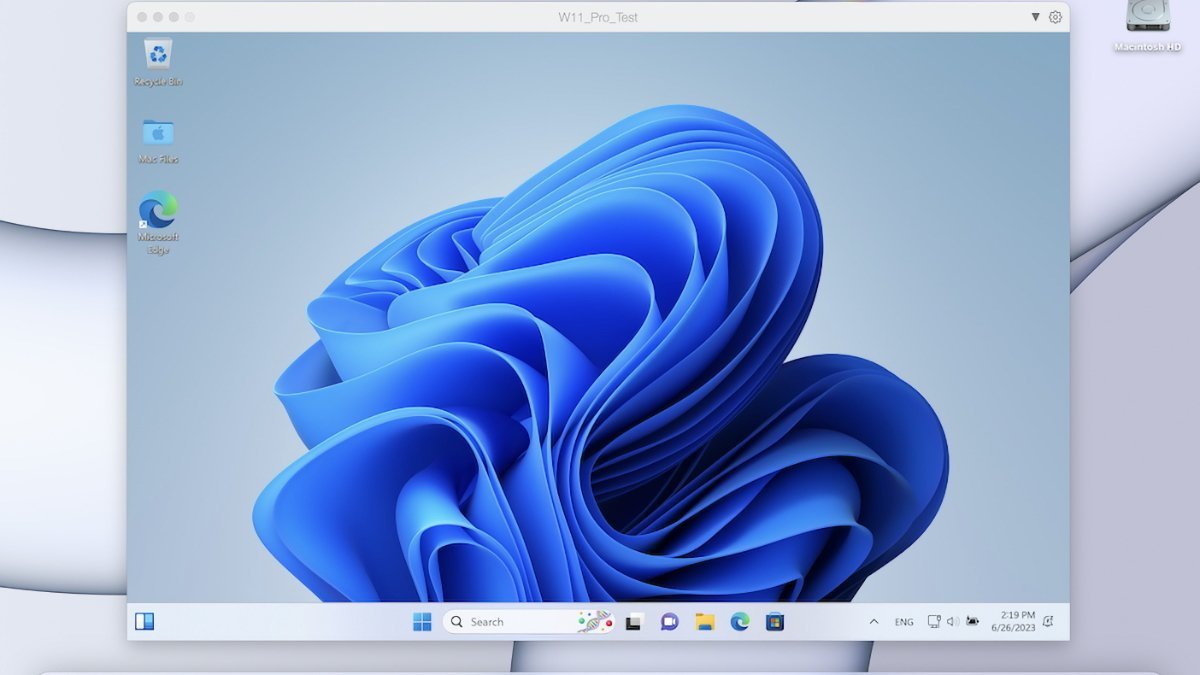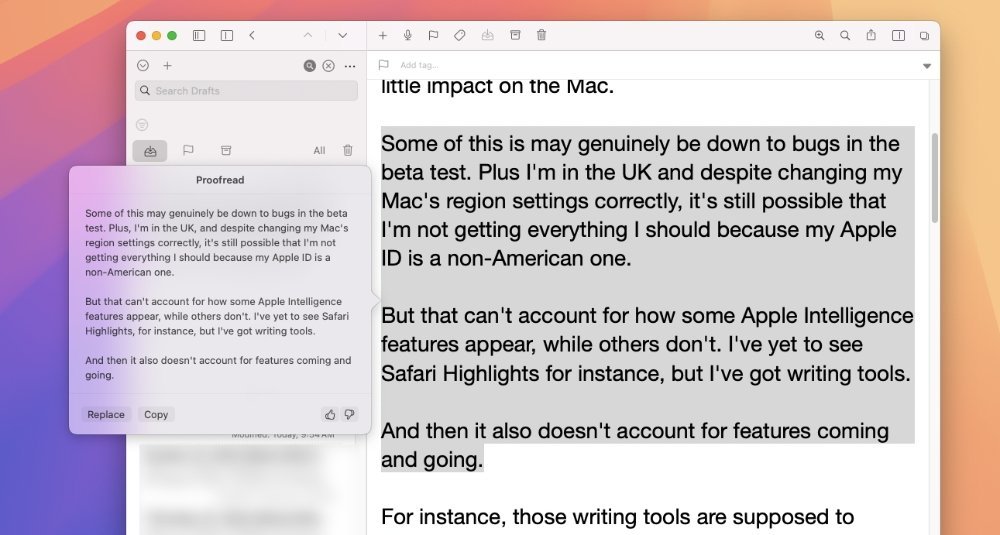Parallels Desktop now lets you use Apple Intelligence tools in Windows applications
With Parallels Desktop, it's now possible to use select Apple Intelligence features inside Windows applications. Here's how it works, and what you need to know.

Parallels Desktop makes it possible to use Apple Intelligence features inside Windows apps.
On Monday, macOS Sequoia 15.1 was released, and Apple's latest suite of AI-powered tools, dubbed Apple Intelligence, became available to the general public. Apple Intelligence can be used to edit images, summarize conversations, and edit text through the help of generative AI software.
Apple Intelligence is only available on Macs equipped with Apple Silicon chips running macOS Sequoia 15.1 or newer. Now, an update to the popular virtual machine application Parallels Desktop lets you use Apple Intelligence features such as Writing Tools within Windows apps.
Writing Tools, Apple's system-wide text editing utilities, can be used to adjust the tone of texts, or proofread and summarize them. Writing Tools can change user-provided text and make it sound more friendly, professional, or concise, among other things.
If you have an Apple Silicon Mac with Apple Intelligence enabled and the latest version of Parallels Desktop (version 20.1) installed, you can start using Writing Tools in Windows apps fairly quickly.
To be able to use Writing Tools, it's necessary to ensure that the Parallels Tools have been updated on your Windows virtual machine.
To check if your Parallels Tools are up to date, you can open the Parallels Desktop Control Center, and then launch your Windows virtual machine. After that, you can update the Parallels Tools from the macOS menu bar, by selecting the Actions menu, and clicking on Update Parallels Tools if the option appears.
Writing Tools is currently the only Apple Intelligence feature that can be used within Windows apps via Parallels Desktop. While the idea of using Writing Tools in Windows apps may appeal to some users, there are already plenty of similar Windows-compatible apps that function without workarounds, such as Grammarly.

Writing Tools is one of many Apple Intelligence features.
Aside from Writing Tools, Apple Intelligence also powers utilities such as the Clean Up tool in Photos, while macOS Sequoia 15.2 introduces support for image generation through Image Playground. Apple Intelligence is also available on iPhone and iPad, with iOS 18.2 and iPadOS 18.2, respectively.
From Monday through Wednesday, Apple announced a trio of M4-powered Mac models -- a new iMac, a new MacBook Pro, as well as a redesigned Mac mini. Apple Intelligence and its associated features are available on all of the newly announced computers.
Read on AppleInsider

Comments
As a result I kept my x86 Mac around with Parallels on it - just so I can continue with the above use cases. In other words, it sits in a drawer most of the time while I use a nee Mx based Mac the rest of the time. I wish Parallels had found a way to do Rosetta-like x86 emulation to let me get rid of my old Mac. Emulation is slow, of course, but speed isn’t critical.
macOS, fixing Windows from the inside out.
I run old x86 Peachtree on parallels, have done for years on intel based macbooks.... now I run it under windows 11 for arm on my MacBook Air m2, and also my MacBook Pro m3. It works great, just as fast as it don on the old intel silicon. So you don't need to keep your old machine sat in a drawer.
in other words you dont need Parallels to do Rosetta like stuff....
Windows 11 on Arm supports emulation of both x86 and x64 apps and performance has been enhanced with the introduction of the new emulator Prism in Windows 11 24H2.